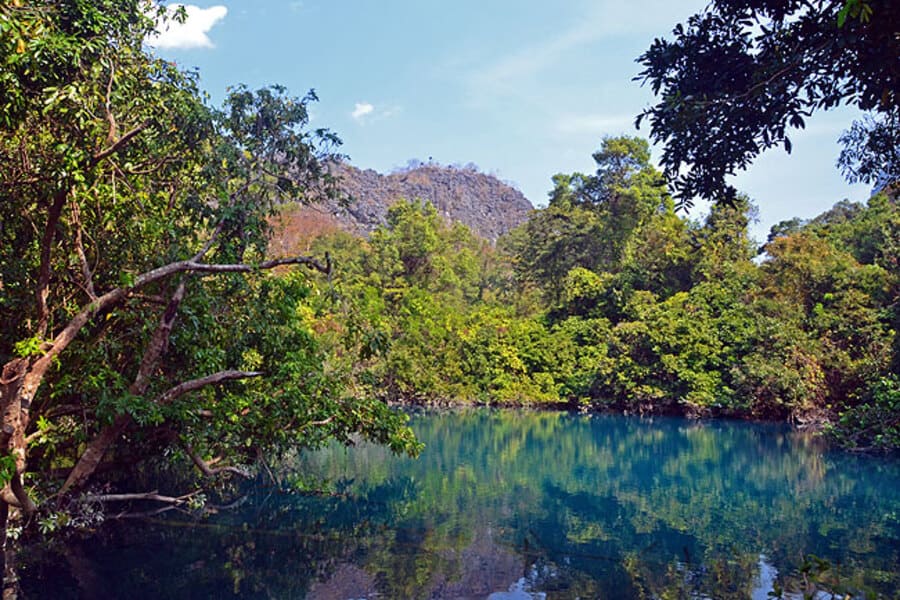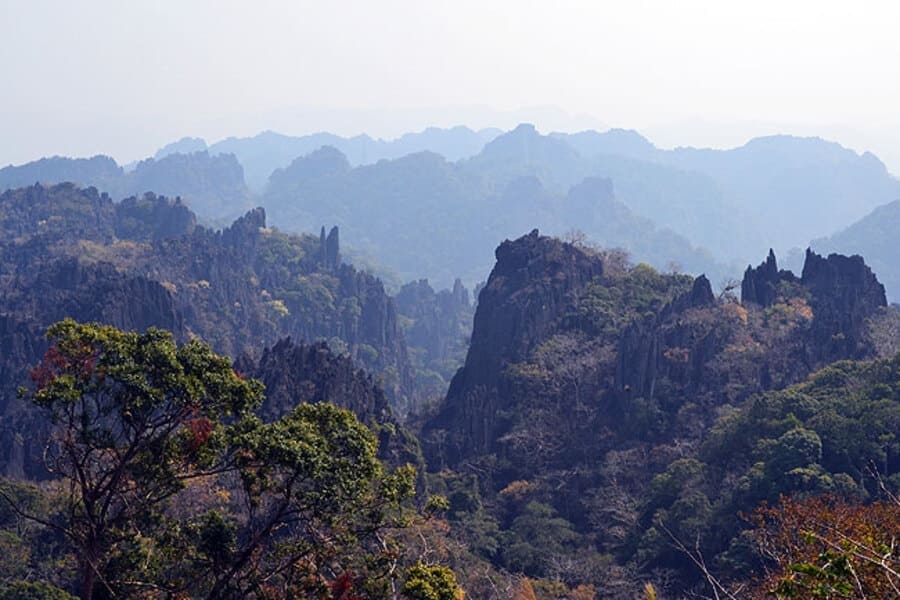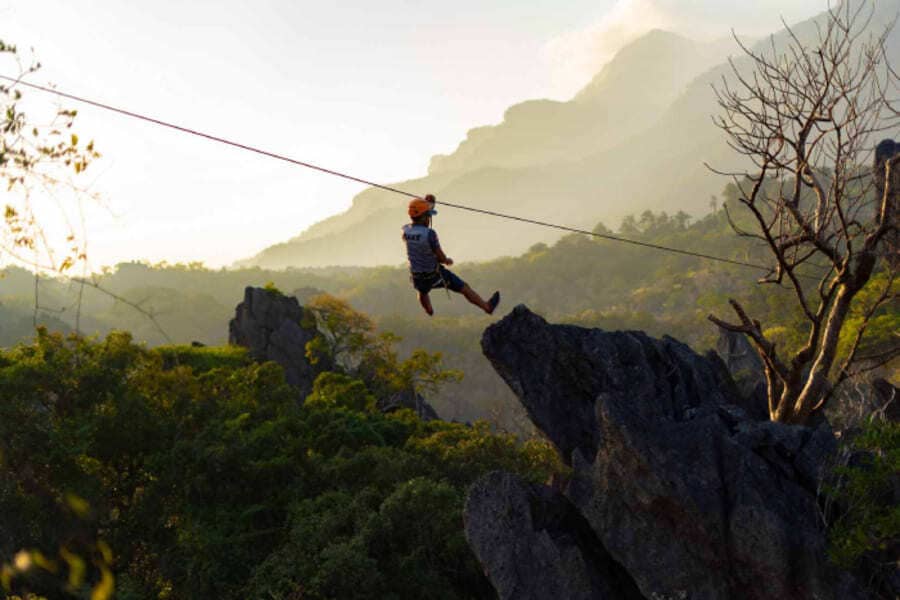Embark on a laos tour package to explore the enchanting wonders of Phou Hin Poun National Protected Area, a hidden gem renowned for its mesmerizing karst landscapes and captivating caves. Nestled within the rugged terrain of central Laos, this protected area offers visitors a glimpse into the geological marvels and natural beauty that define the region. From towering limestone cliffs to intricate cave systems, Phou Hin Poun National Protected Area beckons adventurers and nature enthusiasts alike to discover its secrets and immerse themselves in the breathtaking scenery of Laos.
Overview of Phou Hin Poun Protected Area
Phou Hin Poun National Protected Area is a pristine wilderness renowned for its stunning karst landscapes, biodiverse ecosystems, and captivating cave systems. Encompassing an area of approximately 2,300 square kilometers, this protected area is nestled within the limestone mountains and lush forests of the Annamite Range.
One of the defining features of Phou Hin Poun is its dramatic karst topography, characterized by rugged limestone cliffs, towering pinnacles, and hidden valleys. The landscape is dotted with unique rock formations, some resembling giant stone pillars rising majestically from the earth, while others feature intricate caves and caverns carved over millennia by the forces of nature.
The protected area is home to a rich diversity of flora and fauna, including rare and endemic species that thrive in its varied habitats. Dense forests blanket the valleys and slopes, providing habitat for wildlife such as gibbons, langurs, and various species of birds, reptiles, and mammals.
Phou Hin Poun is perhaps best known for its spectacular cave systems, which rank among the largest and most impressive in Laos. Tham Kong Lo, also known as Kong Lor Cave, is the centerpiece of the protected area and is famous for its colossal dimensions, stretching over 7 kilometers in length and reaching heights of up to 100 meters. Visitors can embark on boat tours through the subterranean river that flows through the cave, marveling at its towering limestone walls and otherworldly beauty.
The Karst Landscapes and Caves in Phou Hin Poun Protected Area
The karst landscapes of Phou Hin Poun are a testament to the forces of nature at work over millions of years. Towering limestone cliffs rise abruptly from the forested valleys, creating a breathtaking backdrop of jagged peaks and sheer rock faces. These karst formations, shaped by the dissolution of soluble rocks such as limestone, are among the most spectacular in Southeast Asia.
Amidst this rugged terrain lie a network of caves and caverns, each with its own unique characteristics and allure. Tham Kong Lo, or Kong Lor Cave, is perhaps the most famous of these caves, stretching over 7 kilometers in length and traversed by a subterranean river. Visitors can embark on boat tours through the cave, marveling at its vast chambers, towering stalactites, and otherworldly beauty.
In addition to Tham Kong Lo, Phou Hin Poun is home to numerous other caves waiting to be explored. Tham Nam Non, Tham Poui, and Tham Nam Lod are just a few examples of the many caves scattered throughout the protected area, each offering its own distinct features and hidden wonders.
The karst landscapes and caves of Phou Hin Poun National Protected Area not only captivate the imagination but also provide vital habitat for a rich diversity of flora and fauna. Dense forests cover the valleys and slopes, harboring rare and endemic species of plants and animals. Birds, bats, reptiles, and mammals find refuge in the sheltered alcoves and crevices of the limestone cliffs, adding to the area's ecological significance.
Activities for Tourists in Phou Hin Poun National Protected Area
- Cave Exploration: Phou Hin Poun is home to some of Laos' most spectacular limestone caves. Explore the vast chambers and intricate formations of Kong Lor Cave, a highlight of the area. You can take a boat ride through the cave's subterranean river, marveling at the towering stalactites and stalagmites along the way.
- Trekking and Hiking: Embark on guided trekking or hiking excursions through the rugged terrain of Phou Hin Poun. Trails wind through dense forests, limestone karst landscapes, and remote villages, providing opportunities to encounter diverse flora and fauna while enjoying panoramic views of the surrounding mountains.
- Wildlife Watching: Phou Hin Poun is home to a rich variety of wildlife, including rare and endangered species such as the Indochinese tiger and Asian elephant. Join guided wildlife watching tours to spot native birds, mammals, reptiles, and amphibians in their natural habitats.
- Birdwatching: With its diverse habitats ranging from forests to wetlands, Phou Hin Poun is a paradise for birdwatchers. Keep your binoculars handy to spot a wide array of avian species, including endemic and migratory birds.
- Cultural Encounters: Immerse yourself in the traditional way of life of the local communities that call Phou Hin Poun home. Visit villages inhabited by ethnic minority groups such as the Lao Loum, Lao Theung, and Lao Soung, and learn about their customs, crafts, and daily routines.
- Photography: Capture the natural beauty and cultural diversity of Phou Hin Poun through photography. From dramatic limestone karsts to vibrant wildlife and colorful traditional costumes, there are endless opportunities for stunning shots in this picturesque national protected area.
How to Reach Phou Hin Poun National Protected Area
Reaching Phou Hin Poun National Protected Area in Laos requires a combination of transportation modes due to its remote location. Here's a guide on how to get there:
- From Vientiane or Luang Prabang: If you're starting from either Vientiane or Luang Prabang, the most common route involves taking a domestic flight to Pakse, the capital of Champasak Province, which is the closest major city to Phou Hin Poun. From Pakse, you can continue your journey by road.
- By Road from Pakse: Once in Pakse, you can hire a private car or join a guided tour to Phou Hin Poun National Protected Area. The journey typically takes several hours, and the roads may be rough and winding, especially as you get closer to the protected area.
- By Bus or Minivan: Alternatively, you can take a bus or minivan from Pakse to the town of Thakhek, which is located near Phou Hin Poun. From Thakhek, you can arrange onward transportation to the protected area. Keep in mind that bus schedules in Laos may be less frequent and reliable compared to other countries, so it's advisable to check ahead and plan accordingly.
- Local Transportation: Once you arrive near Phou Hin Poun, you may need to arrange local transportation, such as a tuk-tuk or motorcycle taxi, to reach specific attractions or accommodation within the protected area. It's a good idea to book accommodations in advance and communicate with your hosts regarding transportation options.
- Guided Tours: Another option is to join a guided tour that includes transportation, accommodation, and activities within Phou Hin Poun National Protected Area. Many tour operators in Pakse and Thakhek offer multi-day tours that explore the natural beauty and cultural heritage of the region.
The Best time to Visit Phou Hin Poun National Protected Area
The best time to visit Phou Hin Poun National Protected Area in Laos is during the dry season, which typically spans from November to April. During this time, the weather is generally sunny and dry, making it ideal for outdoor activities such as hiking, trekking, and cave exploration. The dry season also offers clearer skies, providing excellent visibility for wildlife watching, birdwatching, and photography.
Additionally, the dry season coincides with the peak tourist season in Laos, so you can expect more favorable travel conditions, including smoother roads and better availability of accommodations and transportation options.
While the dry season is considered the optimal time to visit Phou Hin Poun, it's worth noting that the region experiences hot temperatures during the daytime, especially in the months of March and April. Therefore, it's essential to stay hydrated and protect yourself from the sun while exploring the protected area.




